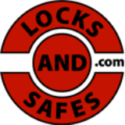Lock functions will help you determine which lock will fulfil your needs. This blog post will help you get familiar with the different lock functions that are available.
Lock Functions
Privacy – This function is usually used in bathroom and dressing room locks. Locks having privacy function generally have a pushbutton or thumbturn on the inside lever, which when pressed locks the outside lever. To unlock the outside lever, simply rotate the inside lever. Privacy locks might be equipped with an emergency coin turn on the outsider lever which can be used to unlock the door in case of an emergency.
Storeroom – Locks having storeroom function are characterized by a rigid outside lever. This means that a key is required to retract the latchbolt to open the door from the outside. At the same time, the storeroom lock’s inside lever retracts latchbolt and always give free egress from the inside. Such locks are ideal for securing storage areas, electrical rooms, server rooms etc.
Office – Locks having the office function have a tumbturn on the inside and a key cylinder on the outside. The outside lever is unlocked by a key or by turning the thumbturn from the inside. The door will remain unlocked till such time as someone does not relock the door from the outside using a key or relock the door from the inside by turning the thumbturn. Till the door is not relocked, the latchbolt can be retracted by levers from both sides, which means there is free movement on both sides. Even if the door is locked, the office lock always allows free exit from the inside by turning the lever. Office locks as the name suggests are designed for use on office doors.
Entry – Locks having entry function have a key cylinder on the outside and a thumbturn on the inside. A key will be required to unlock the door from the outside. Thumbturn from the inside locks the door. Inside lever retracts latchbolt only after thumbturn has unlocked the lock.
Classroom – Locks having classroom function are characterized with a key cylinder on the outside which retracts the latchbolt to unlock the door. The lock will relock only with a key. The inside lever allows free exit at all times.
Passage – Locks with passage function are unlocked at all times, and levers on both sides can retract the latchbolt at all times, allowing free movement.
Institution – Locks with Institution function have rigid inside and outside levers and require keys at all times to retract the latchbolt both from the inside and outside. This means that a key is required for both entry and exit.
Deadbolts
Deadbolts add an extra layer of security to a lock. Common deadbolt functions are:
Single cylinder deadbolt – will require a key from the outside to retract/extend the deadbolt, while allowing free egress from the inside.
Single cylinder deadbolt with thumbturn – allows a key from the outside to retract/extend the deadbolt. Thumbturn from the inside retracts/extends the deadbolt.
Double cylinder deadbolt – requires a key from the outside to extend/retract the deadbolt and a key from the inside to extend/retract the deadbolt.
Electrified Lock Functions
Fail Safe – Locks with fail safe function remain locked when electricity is applied on them, i.e. the outside lever remain locked, while the inside lever allows free egress at all times. The outside lever unlocks when electricity is stopped. The fail safe locks can be used in places such as stairwell doors. In case of fire when the stairwell is unusable, electricity is stopped, the lever is unlocked and the door can be opened to give re-entry onto a floor. All other times, with electric supply the lever remains locked.
Fail Secure – Locks with fail secure function have outside lever unlocked when electricity is applied on it. The inside lever allows free exit at all times. When electricity is stopped the outside lever locks. Fail secure locks are used in places which need to be secured when there is a power failure.
